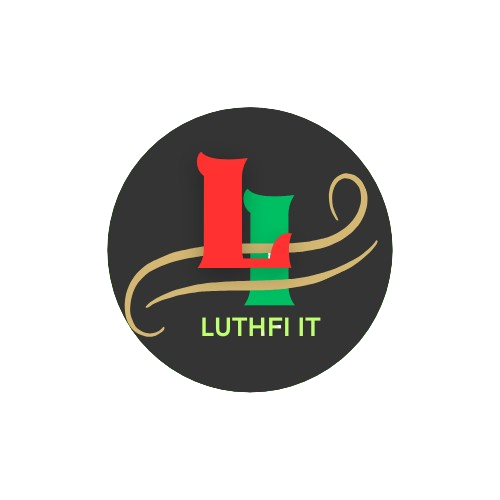In an era where the digital marketplace continues to expand rapidly, businesses across all sectors must harness the power of the internet to stay competitive. One of the most powerful tools in this digital toolbox is Search Engine Optimization . While often associated with tech and e-commerce industries, SEO holds tremendous untapped potential for the garments and apparel sector. Whether you’re a clothing manufacturer, fashion retailer, or apparel exporter, adopting SEO strategies can significantly impact your brand visibility, sales, and long-term growth.
In this article, we’ll explore how SEO can be a game-changer for the garments industry, the key benefits, and practical strategies for implementation.
What is SEO?
Search Engine Optimization refers to the process of optimizing a website to improve its visibility in search engine results pages (SERPs). When users search for terms related to your business—like “wholesale T-shirts Bangladesh” or “custom denim jackets for retail”—you want your website to be among the top results. This visibility drives organic traffic to your site, which can lead to more inquiries, sales, and brand recognition.
Why the Garments Sector Needs SEO
The global apparel industry is worth over $1.5 trillion and continues to grow. With thousands of brands competing for attention online, standing out has become more challenging than ever. Traditional marketing methods like trade shows, print catalogs, word-of-mouth still matter, but they must be supported by a strong online presence. SEO enables garment businesses to:
- Reach global buyers and consumers
- Build long-term brand credibility
- Increase return on investment (ROI)
- Adapt to changes in buying behavior, especially post-pandemic
Key Benefits of SEO in the Garments Sector
Increased Online Visibility
Today’s buyers and consumers start their search online. Whether they’re sourcing materials, looking for B2B suppliers, or shopping for trendy outfits, the journey begins with a Google search. Without SEO, your website may be buried under thousands of results. With a well-executed SEO strategy, your brand appears where your potential customers are looking.
Example: A Bangladeshi garments manufacturer specializing in organic cotton clothing can use SEO to rank for keywords like “organic cotton T-shirt manufacturer” or “sustainable apparel supplier.”
More Qualified Leads
SEO doesn’t just bring more traffic—it brings the right traffic. By optimizing for specific keywords and user intent, you attract visitors who are actively looking for your products or services. This increases the chances of converting visits into sales.
B2B Impact: Apparel exporters can target queries like “bulk garment supplier in India” or “private label clothing manufacturers.”
B2C Impact: Retailers can focus on searches such as “affordable winter jackets for men” or “plus-size summer dresses.”
Cost-Effective Marketing
Compared to paid ads and traditional marketing campaigns, SEO is highly cost-effective. While it requires an investment in time, tools, or hiring professionals, the long-term benefits far outweigh the costs. Once your site ranks well, it can continue to attract traffic without ongoing ad spend.
Improved Brand Trust and Credibility
Users trust search engines. If your website consistently appears on the first page of Google for relevant searches, it builds credibility. High rankings are often associated with reliability, quality, and authority in the market. This is especially important in the garments sector, where trust is key—particularly for new or lesser-known brands.
Better User Experience (UX)
SEO isn’t just about keywords; it’s also about optimizing the structure and content of your website. Fast loading times, mobile responsiveness, intuitive navigation, and high-quality content all contribute to better search rankings—and a better experience for visitors.
A well-optimized site ensures that whether your visitor is a wholesale buyer or an online shopper, they find what they need quickly and easily.
Global Reach for Export-Oriented Businesses
For garments manufacturers in export-heavy countries like Bangladesh, India, Vietnam, and Turkey, SEO is a powerful gateway to international markets. You can geo-target keywords like:
- “Clothing manufacturer for UK market”
- “US apparel importers”
- “European fashion brands sourcing”
With the right localization and multilingual SEO strategies, your brand can break into new markets without the need for physical offices.
Insight Into Customer Behavior
SEO tools like Google Analytics, Search Console, SEMrush, and Ahrefs allow you to analyze visitor behavior—what they’re searching for, how long they stay, what products they browse, and what content performs best. These insights help in refining your product offerings, marketing strategies, and content creation.
Long-Term Competitive Advantage
While paid ads stop generating traffic once you stop paying, SEO delivers long-term results. It’s a cumulative process—over time, your website authority grows, and so does your visibility. This provides a sustainable competitive edge over competitors who rely solely on short-term campaigns.
How to Implement SEO in the Garments Sector
Here’s a simplified breakdown of how apparel companies can start leveraging SEO:
Keyword Research

Start by identifying keywords your target audience is searching for. Use tools like:
- Google Keyword Planner
- SEMrush
- Ubersuggest
- Ahrefs
Look for both short-tail (e.g., “T-shirts”) and long-tail keywords (e.g., “custom printed T-shirts for startups”) that match your products and customer intent.
On-Page Optimization

Ensure every page of your website is optimized with:
- Proper title tags and meta descriptions
- Keyword-rich headers (H1, H2)
- Descriptive image alt text (especially important for fashion visuals)
- Mobile-friendly design
- Fast loading speed
Content Marketing
Create valuable content that addresses the needs and questions of your target audience. Examples include:
- Blog posts like “How to Choose the Right Fabric for Your Brand”
- Guides such as “Step-by-Step: Working with a Garment Manufacturer”
- Case studies or success stories of past clients
- Behind-the-scenes videos of your factory or design process
Great content not only attracts traffic but also improves dwell time and engagement, which positively affects SEO.
Link Building

Earning backlinks from reputable websites signals to search engines that your site is trustworthy and authoritative. Some ways to build links:
- Partner with fashion bloggers or influencers
- Publish guest posts on relevant industry sites
- Get featured in online trade directories or garment expos
- Create share-worthy infographics on topics like sustainable fashion trends
Local SEO
If you’re serving a local market or participating in regional supply chains, optimize your website for local search queries. Use:
- Google Business Profile
- Local keywords (“garment suppliers in Dhaka”)
- Local citations and listings
Technical SEO
Make sure search engines can crawl and index your website easily. This includes:
- XML sitemap submission
- Clean URL structures
- No broken links or duplicate content
- Use of schema markup for product listings
Conclusion
In today’s digitally connected world, SEO is no longer optional—it’s essential. For the garments sector, where competition is fierce and global opportunities are vast, SEO opens the door to markets, customers, and success stories that were once out of reach.
By investing in smart SEO practices—from keyword research to content creation and technical fixes—apparel businesses can secure a powerful online presence, improve ROI, and future-proof their growth in an increasingly digital-first world.
